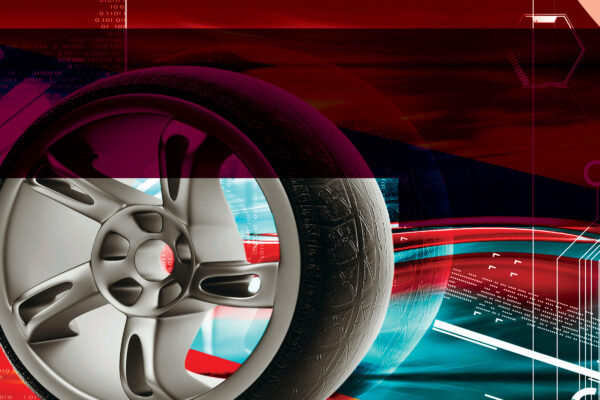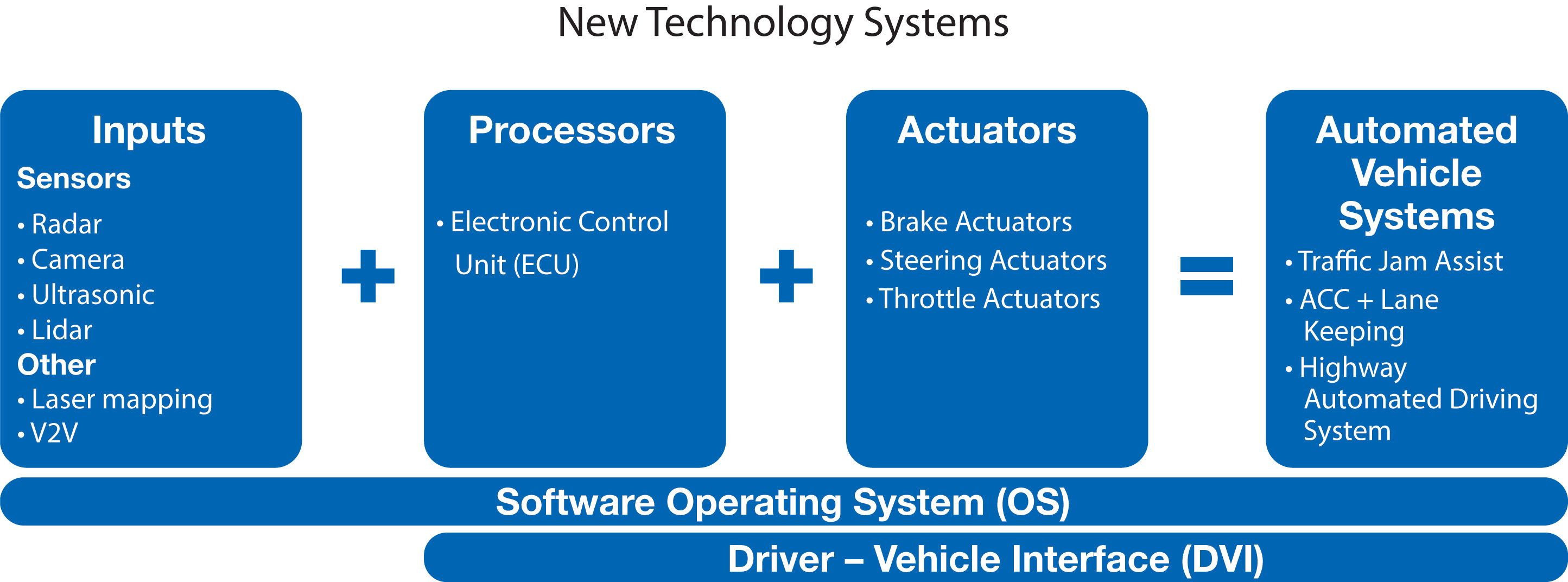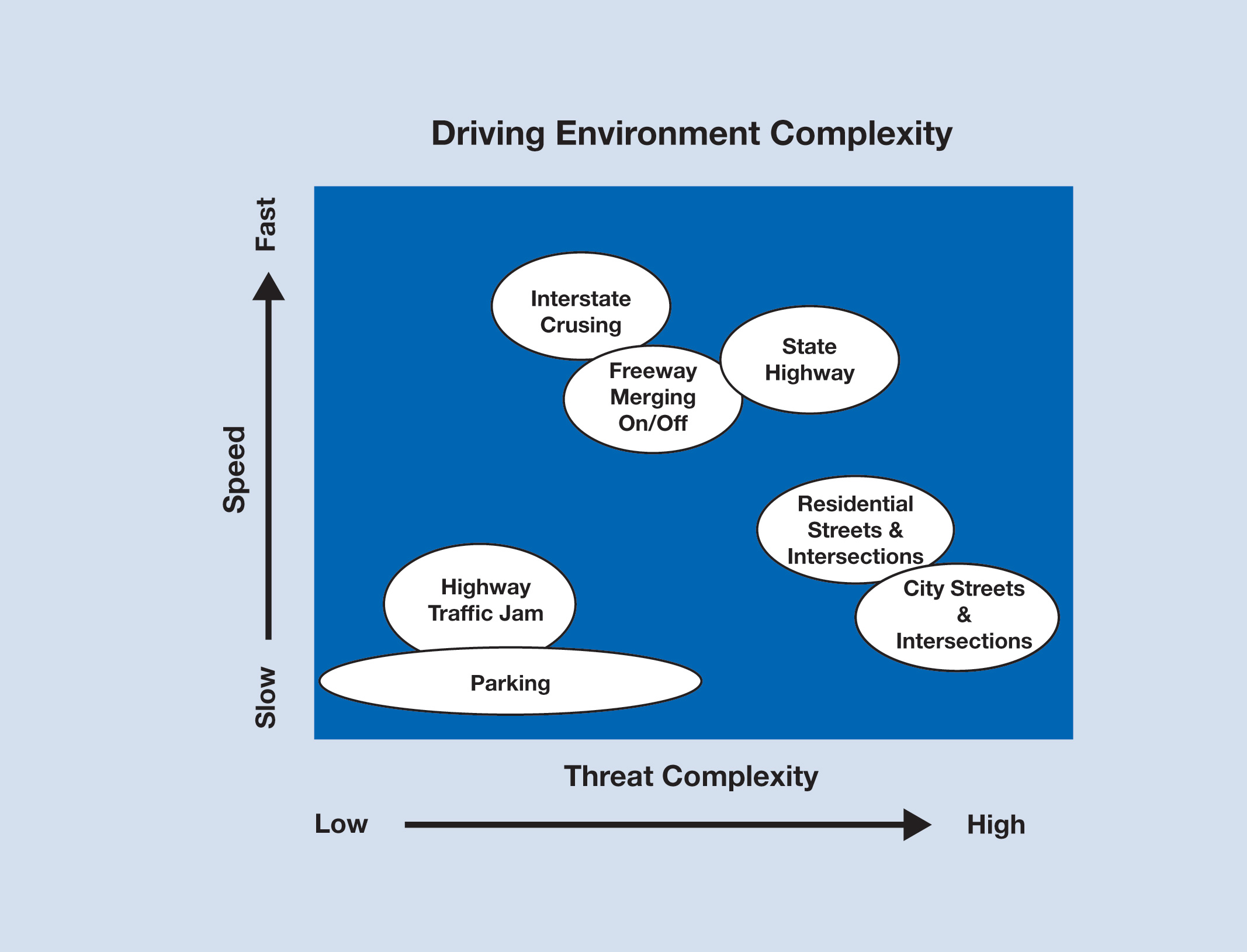
The coming revolution in vehicle technology and its implications
As automobiles get smarter and increasingly connected, it is technologies like this that will mitigate the inherent risks as highways carry autonomous vehicles and potentially distracted motorists. Programmable devices like FPGAs and SoCs are at the heart of a software-led revolution.
Three vehicles, one revolution
Now, every day in California’s South Bay, you can commonly see three vehicles representing three world-changing trends in the automotive industry: a sleek Tesla Model S rolling quietly past; a late-model sedan with an Uber “U” in the back window picking up a passenger; and a heavily modified Lexus SUV with a spinning LIDAR on the roof, driving itself down the street while a remote driver, anywhere in the world, collects data. These daily sights represent three technology-driven trends that are simultaneously arriving to significantly disrupt the automotive status quo: electrification, connectivity and autonomy. Each trend is moving at a different pace, but all three have one thing in common: software!
Software: refining today, revolutionizing tomorrow
Since 2004, the costs of electronics in an average vehicle have doubled from 20 to 40 percent. Today’s luxury vehicles commonly contain 100 microprocessors and run 100 million lines of software code, controlling everything from engine timing to infotainment systems.
We are now at a point where software, sensors and processors are delivering entirely new areas of vehicle functionality: not simply transitioning conventional functions from mechanical to electronic control. Both the ADAS systems of today and the autonomous driving systems of tomorrow will rely completely on software to make sense of data from sensors, cameras, the Internet, infrastructure and other vehicles.
Increased complexity of vehicles has already shifted the automotive value chain. The trends of electrification, connectivity and automation will only accelerate this shift in value toward those companies that create electronics and software, and away from OEMs that fail to innovate.
This shift will have two effects. First, software will become a critical market differentiator, pressuring OEMs to shorten product cycles and provide support and updates for legacy systems. Secondly, the shift to software allows new entrants to innovate in an industry with notoriously high barriers to entry.
In a typical ADAS-equipped vehicle, applications such as forward collision avoidance (FCA) are enabled by sensors providing data on the external driving environment to an electronic control unit (ECU).

This unit then uses software to determine whether a threat is present and operates brake actuators (or potentially, other countermeasures) to mitigate the threat.
The sensors available today for driver assistance applications are the hardware foundation for autonomous vehicles. Tomorrow’s sensors will necessarily be smaller, faster and cheaper. But the real gap between the ADAS systems of today and the fully autonomous systems of tomorrow is seen in software. Regardless of how fast inputs can be processed, the software algorithms that will allow vehicles to drive themselves more efficiently and safely than human drivers in complex driving environments remain the biggest challenge.
Programmable devices accelerate innovation
Bridging the gap between dedicated hardware and innovative software, programmable devices such as Xilinx’s Zynq-7000 All Programmable SoC are at the heart of today’s most sophisticated ADAS systems and are quickly replacing much less versatile ASSPs. The combination of the Zynq SoC’s ARM processors and FPGA logic on the same device has enabled OEMs to build highly sophisticated, all programmable ADAS platforms that can scale with automotive product lines and be upgraded with new enhancements to suit demanding and ever-evolving customer requirements.
Automotive OEMs can leverage the Zynq SoC in many platform configurations. The device serves as a multi-sensor, multi-feature driver assist platform, a high-resolution video and graphics platform, a vehicle networking and connectivity platform, and an image-processing and recognition platform. In these applications, customers implement algorithms for their design’s most complex and compute-intensive functions in the logic portion of the SoC and implement serial processing functions in the on-board ARM processing system.

They leverage high-speed I/O to link to sensors and create highly reliable connections to automotive networks. Customers also leverage IP from SoC vendors, as well as their design tools and development environments, to quickly develop ADAS platforms.
New introductions such as the Zynq UltraScale+ MPSoC version of the Zynq SoC will allow OEMs to create ever-more-sophisticated fusion systems with a programmable platform that can’t be matched by any other silicon architecture.
Consumer adoption and diffusion
Whilst OEMs are choosing different strategies to bring ADAS and vehicle autonomy to market, ADAS-equipped vehicles of increasing capability have already been introduced nearly every year since 2010 and continue to roll out annually.

Now that the early generations of this technology are available, how fast will consumers adopt it?
The relatively high cost of automobiles means that ADAS-equipped and autonomous vehicles are likely to be adopted at rates slightly slower than other modern technology, but they will still be adopted much quicker than conventional automobiles were.
As with the uptake of other new technologies, first movers and early adopters will drive early sales of ADAS-equipped vehicles, followed by gradual adoption by the majority of consumers once the safety benefits have been proven and costs have fallen. This suggests that adoption will be driven by the benefits rather than throttled by costs.
Bearing out this conclusion, Marconi Pacific consumer research into ADAS and autonomy indicates that consumers will be initially drawn to the safety and convenience of this technology. Safety will be a large motivator for families as they learn how ADAS-equipped vehicles avoided crashes that might have injured or killed the vehicle’s occupants.
Another big driver will be time recapture. Being able to cruise along a freeway while paying limited attention to the road will be a significant accelerator of demand. Marconi Pacific has built a diffusion model to better understand the pace of introduction of the technology and its uptake by consumers. The model is scenario based, with numerous inputs. Key factors include annual vehicle sales, ADAS technology introduction dates and fleet turnover forecasts.
The results are striking. In one run of the model, by 2035 more than 50 percent of vehicles and 85 percent of new-vehicle sales across all segments had one generation or another of ADAS-equipped or autonomous vehicles.

autonomous vehicle (AV) technology will pick up
as consumers see the safety and convenience benefits.
Of course, different levels of ADAS and of autonomy will have different impacts on society, including different levels of total annual crash reduction, different impacts on traffic congestion and different impacts on shared-vehicle, Uber-like services.

could approach 85 percent of total car sales by 2035,
according to one model.
Auto ecosystem implications
The automotive sector and adjacent industries form a large ecosystem with pervasive reach across the global economy. As innovation in the form of electrification, connectivity and automation disrupts the status quo, the effects will be felt not just by OEMs, but also by numerous other sectors and businesses previously structured around conventional personal vehicles.
Companies that move quickly to take advantage of the opportunities are likely to succeed. Laggards will be the losers.

About the authors:
Thomas Gage is C CEO and Managing Director – www.marconipacific.com
Jonathan Morris is Senior Associate at Marconi Pacific
Related articles:
Vector, Baselabs join forces to develop ADAS tools
ADAS surround view development kit
All-programmable multiprocessor SoC targets ADAS, IoT and 5G systems
Image processor makes camera-based ADAS cheaper
 If you enjoyed this article, you will like the following ones: don't miss them by subscribing to :
eeNews on Google News
If you enjoyed this article, you will like the following ones: don't miss them by subscribing to :
eeNews on Google News



